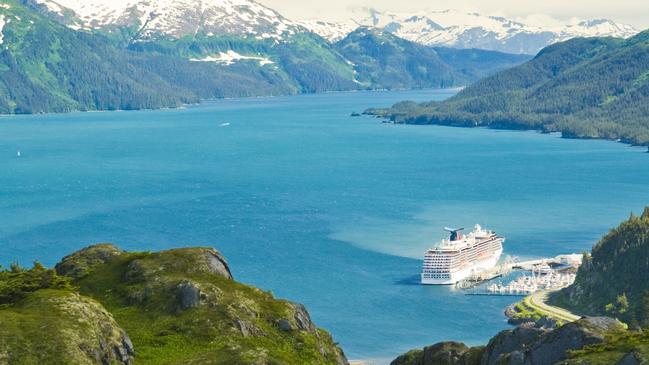Alaskan slope sparks tsunami fear
A chance sighting from a tourist boat has led researchers to warn a catastrophic tsunami could be triggered in Alaska within a year.

A chance sighting from a tourist boat has led researchers to identify an unstable slope above an Alaskan fjord that they warn could set off a catastrophic tsunami within a year.
The steep, 1.5km-long sheet of rock and dirt clings to one flank of a fjord in Prince William Sound, about 95km east of Anchorage. Its volume has been estimated at 500 million cubic metres, more than a hundred times that of the concrete walls of the Three Gorges Dam in China, the world’s largest hydropower project.
It was not known to be a pressing concern until artist Valisa Higman spotted what looked like fractures on the slope while sailing on the Barry Arm fjord. She sent photographs to her brother, Bretwood Higman, who studies geological hazards, and he determined from satellite imagery that the slope had been sliding for many years.
A research team from 14 organisations began studying the Barry Arm area a month ago as part of a NASA-backed project to assess landmass shifts across the North American Arctic. They found that rising temperatures had caused the retreat of a glacier that helps to tether the slope to the cliffs. Only a third of the slope is now supported by ice so an earthquake, prolonged rain or a heatwave that melts too much surface snow could set off an enormous landslide.
A sudden collapse could happen within a year but is “likely within 20 years”, they concluded.
The Alaska Department of Natural Resources said: “An increasingly likely landslide could generate a wave with devastating effects on fishermen and recreationalists.”
Computer models suggest that if the entire slope collapsed, the resulting tsunami would be several hundred metres high as it set off down the fjord. The destructive wave would potentially still be nine metres high 20 minutes later when it reached Whittier, a town at the head of a narrow fjord 50km away.
Although the research team’s findings have not been peer reviewed, they decided it was too important to wait, said Anna Liljedahl, a hydrologist with the Woods Hole Research Centre in Massachusetts, who was part of the group. “It could happen anytime, but the risk just goes way up as this glacier recedes,” she told The New York Times.
In 1958 an earthquake in Alaska caused a rockslide of 30 million cubic metres into Lituya Bay, resulting in a tsunami that washed out trees up to 525m above sea level at the entrance of Gilbert Inlet.
the times


